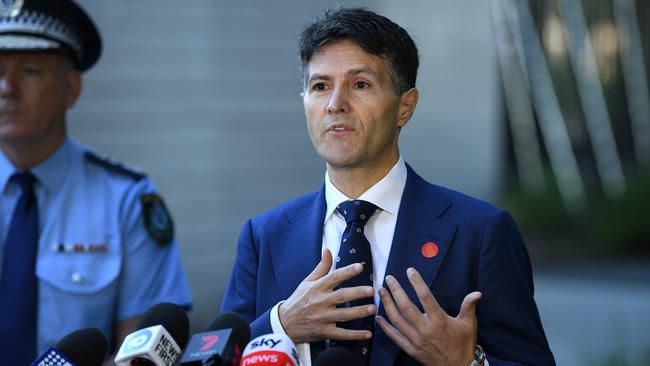Bank, phone data to be tapped to enforce local lockdowns
At-risk suburbs and towns across NSW could be locked down even after social restrictions are lifted in the coming months.

At-risk suburbs and towns across NSW could be locked down even after social restrictions are lifted in the coming months, with compliance to be monitored through analysis of credit card spending, location data and other metrics to determine any increased risk of COVID-19 transmission.
The Berejiklian government has begun amassing vast amounts of data on the presence and movement of people so it can target specific regions — through a process called “hammer and dance” — should outbreaks occur.
The strategy of localised lockdowns is gaining momentum at the higher levels of the NSW government, The Australian has learned. And the NSW Data Analytics Centre is pulling together a trove of information, including credit card spending, e-Toll records, Opal card movements, and the location data stored on mobile phones.
The data — which is aggregated and anonymised — is coming in from a range of sources, including the Australian Bureau of Statistics, major banking institutions, NSW Health, NSW Treasury and approximately 160 NSW government bodies. Mobility data, made available by Apple a week ago, is also being used, as is similar data released by Google and Facebook.
Officials are hoping to use the information to learn how the coronavirus is spreading, but also which regions are drawing crowds, including beaches, parks and shopping centres. It can also be used to establish whether residents in high-risk transmission zones are failing to self-isolate.
“If there are pockets of outbreaks, we might move to quarantine those particular areas,” a senior government minister told The Australian. “But that’s down the track.”
Victor Dominello, the NSW Customer Services Minister overseeing this effort, said analysis of this data would help identify at-risk communities and tailor responses accordingly. In some cases, advertising could be increased to drive home the message that people need to stay indoors.
If that didn’t work, discussions could be held with local councils to close high-traffic areas, or with police to discuss additional compliance measures.
“Rather than going to the highest level of restrictions across the state, it would be far preferable to take a more localised approach to deal with the issues,” he said.
“If we can go into that area, work with the council, get more police on the streets and get people back into their homes, we’re looking after that community.”
The data is already being used to provide daily statistical updates to the NSW State Emergency Control Centre, where the effort to combat the COVID-19 crisis is being helmed by police officers, health officials and other agencies.
Mr Dominello said the hibernation caused by blanket social restrictions was not sustainable over the long term. He said the path forward would be to lift restrictions gradually and then address any outbreaks through targeted, localised campaigns.
“As we move out of the hibernation gently, as we see instances of the problem emerge, we need to tackle the problem rather than go back to a deep sleep,” he said.
Globally, this approach was called “hammer and dance”, Mr Dominello said. “You’ve got to dance with this virus, and when it pops its head up you need to hammer it down. But to be effective, it’s got to be local, hard and fast.”
Ian Oppermann, the NSW government’s Chief Data Scientist, said the intersecting data would also be used to tackle other issues arising from the restrictions, such as increases in domestic violence through a rise in alcohol sales.
Another emerging question was how businesses were adapting to online sales, which allows them to remain viable over a longer period. “If a sector or business hasn’t been able to do that, they’re potentially at risk over a sustained period of restricted movement,” Dr Opperman said.




To join the conversation, please log in. Don't have an account? Register
Join the conversation, you are commenting as Logout